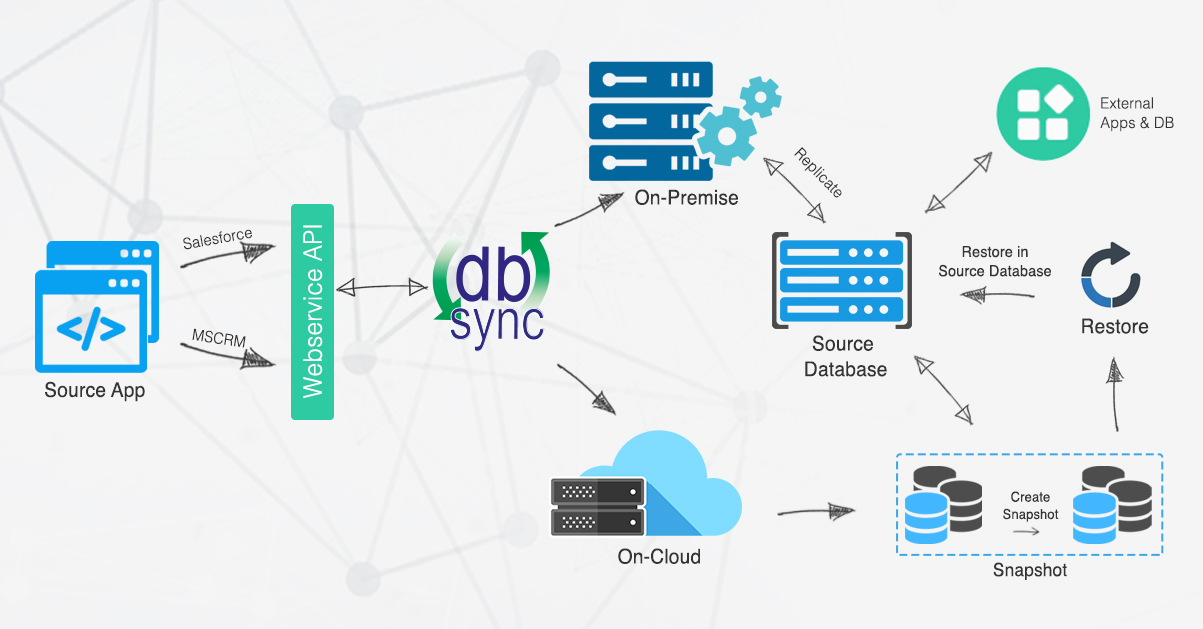2022
DBSync Replication is used for replication and synchronization of data between source apps and different databases. DBSync on-premise replication is offering you to connect the source apps i.e Microsoft CRM with your MySQL or SQL Server database and easily replicate the data between the two applications.
This guide provides information on how to get started by creating a profile and replicating Dynamics 365 CRM to different databases.
Some of the main Application Tools
Building Data Warehouse for Reporting or Data Mining
Integration with ERP or back office applications
Data Migration
Offline data cleansing or manipulation and synchronization
High-Level Architecture
Key Components
DBSync Replication Key Components consists of all these functionalities.
Profiles | The profile is a configuration that provides connection information of your Source Apps and Database and stores configuration of Objects and Tables that needs to be synchronized. One can have multiple profiles to integrate multiple instances of Source Apps and Databases that are tuned to specific ERP requirements. |
| Source Apps Details | Source Apps details tab is where your Source Apps login details are stored. You can provide your Source Apps UserName, Password, SOAP endpoint and lastly the environment you are connecting with. It also provides you an option of testing the connection with the given credentials. |
| Database Details | Database Details tab is to save and configure your Database connection string. It also provides you an option of testing or validating your database credentials. |
| Source Apps Sync Object Details | Source Apps objects, including the custom objects and non-replicable objects. It provides the user to the option of filtering out Source Apps records based on filter criteria and selectively syncs objects by including or excluding fields. |
| Notifications | Notification allows you to configure the system to send sync notifications to the recipient email address and also create a table for logging in sync logs upon after each sync process. |
| Advanced Settings | Allows non-replicable objects like AccountShare, LeadShare and so on. These are Source Apps objects that cannot have bi-directional sync and require complete data replication instead of incremental replication. (Default behavior will ignore non-replicable objects during data sync). |
| Scheduler | Allows you to schedule the processes in profiles to run at desired intervals of time. |
Supported Versions
Salesforce Connector
Developer Edition
Enterprise Edition for On Cloud
Enterprise Edition for On Premise
Database Supported
- SQL Server
- MySQL
